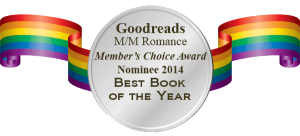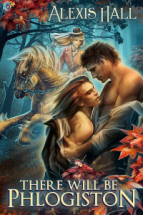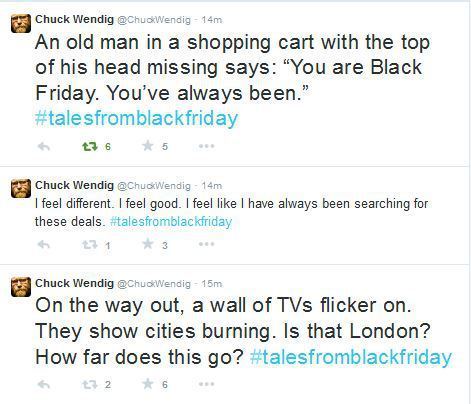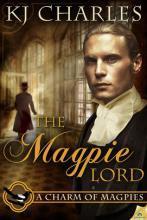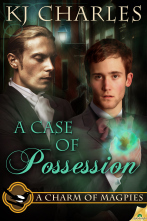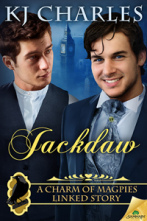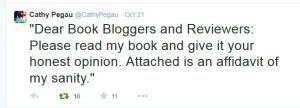K.J. Charles's Blog, page 15
December 5, 2014
Self Editing Tips: Development edits
Self editing is no substitute for real editing. End of. It is not the case that you can do it yourself (I’m an editor and I can’t do my books myself), and your friend who reads a lot isn’t qualified to do it either. If you are self publishing and want to build a reputation or charge for your work, get an editor.
That said, I’m sure you don’t have hundreds of dollars stuffed down the back of the chair, and sums like $45/hour for line edits look pretty scary with no guarantee anyone will buy your book. So it’s a good idea to cover what you can yourself before it goes to the editor, instead of paying someone to do grunt work. And if you’re planning to submit to a publisher, it’s an excellent idea to make sure your MS isn’t full of obvious holes.
So here are some ways you can start to whip your MS into shape. (Again: this is not a substitute for a professional edit.) This is a pretty big topic so I’m going to do two blog posts covering the basics. Today, development edits; look out for line edits next week. Some of this is stuff I’ve blogged on already, so I’ve given links.
Beta readers and crit partners
A strong beta reader/crit partner is invaluable. Strong means someone who likes the genre, or is happy to read in it, but who will be honest with you about the book’s flaws. This is incredibly hard to do. This person may be your friend or relative, they may be about to send you their MS, they probably don’t want to hurt your feelings. It may be easier to find a partner from across the internet, to avoid the face to face difficulty.
You must make it clear that they should be honest. That requires the following from you:
Actively ask for what they didn’t like, not what they did. People want to give you positives. Ask for the negatives.
Take criticism on the chin. Don’t argue. Don’t say ‘You didn’t get it.’ Don’t say ‘You’re wrong.’ Don’t show your inevitable hurt feelings.
Even if they’re wrong in specifics or have blatantly misread, they’ve probably identified a problem. Don’t just reject without thinking.
Thank them for their honesty, and mean it. You should.
Again: No tantrums. If you can’t handle criticism from a beta reader, you’re going to die when the reviews kick in. You might as well cut out the middleman and have a huge social media meltdown right now.
Here are some of the questions to ask your reader:
Were you bored/did it drag? Where?
Does the plot make sense? Any holes?
Are the characters consistent?
Was anyone too stupid to live, or obviously serving the needs of the plot?
What didn’t you get?
I gave my ‘troubled’ first version of Flight of Magpies to two readers. They both – politely, lovingly, reluctantly – said, ‘It’s boring, there’s not enough plot.’ It hurt. It hurt so much I junked 30K words and started again. It would have hurt a lot more if I’d released a substandard book and heard ‘It’s boring, there’s not enough plot,’ on every review blog, and spoiled my beloved series with a crappy instalment that I could never get rid of.
Warning: There are people who take joy in slagging off other people’s work and relish finding clever ways to explain just how bad you were. That’s what Goodreads is for, not beta reads. If the response is all hilarious similes to convey how stupid/boring/confusing that bit was, close the email right there, thank them nicely for their time, and don’t ever ask them again. And when you’re taking your turn at beta reading, don’t be that person.
Structure
It’s hard to look at your own book’s structure but here are some tips.
Write a synopsis from scratch. If you have a glaring plot hole, you may well find it here. If you’re writing all about the adventure plot and nothing about the progress of the relationship, that’s a red flag for a romance. If it’s all ‘And then…’ rather than ‘But then’, if it’s a sequence of events rather than reversals and changes, that may suggest a too-simple narrative line.
Look at your romance arc. (If you’re not writing romance, there will be a similar list of questions for any genre fiction, eg your mystery or adventure arc.)
Is the book about internal conflict (problems between the two MCs) or external conflict (homophobic boss/evil ex/zombie incursion) or both?
If internal, is there enough of a plot arc and character development to show change and the overcoming of obstacles and the growth of the characters?
If external, are you relying entirely on those factors to create the obstacles? Are we still seeing romantic growth and tension?
If you use instalove, how are you maintaining satisfactory tension between the characters throughout the book?
Have you got a black moment? Even in a sweet relationship comedy, the relationship should rise and fall and rise. No obstacles=no plot.
Ensure it’s a shifting conflict – not the same point gone over and over again till one of them gives way.
Check things are going badly. It may be kind to the characters to let them off the hook, have them discuss all their issues sensibly or make everyone around them lovingly understanding, but it makes for a pretty boring book.
Are your hero/ines agents? Are they always reactive/helpless, or do they take agency? That doesn’t mean they should always be in charge: the story should flow from the characters’ flaws and weaknesses as well as their strengths, and obstacles easily overcome aren’t interesting. But we need to see how the MCs’ actions and responses change their situation, for good or ill.
Is enough stuff happening? Pages of banter that don’t advance the plot are a great deal more entertaining for the writer than the reader. Are we moving forward along some arc in every scene, whether action or emotion?
Have you woven in your backstory rather than infodumping?
Time lines
Keep track of ‘that morning’ and ‘three days later’. If you’re doing anything remotely complicated, or if this is a bugbear, I strongly recommend you invest in Aeon Timeline ($40, which is less than the editorial fee for unbuggering your dog’s breakfast of a timeline) or similar software. This allows you to track your timeline, check that it really is a Wednesday, and get character ages and ‘two months ago’ right every time.
Make sure that days have 24 hours and come one after another in chronological progression. Some real examples I have seen/perpetrated:
A dramatic ghost hunting scene taking place in the morning includes references to the dark and the moon because, you know, scary things happen at night.
All the action is happening on successive nights. The days somehow evaporate.
The heroine leaves work on a Saturday night and flees through a busy crowd of commuters heading to work the next morning which is, er, Sunday.
Our heroes cover 25 miles on foot between 7am and 10am.
Book set in England. Hero is jailed in February. He is released six months later and weeps at the daffodils in bloom, as well he might. (I can’t tell you how often this happens. CHECK. YOUR. FLOWERS.)
Read scenes for action
This is almost impossible to do yourself, because you know what ought to be happening. Try to play the scene as a film in your head.
See the hero get out of bed naked, have a screaming row with the heroine, and storm off to ride away on his motorbike without actually dressing!
Gasp as the heroine gets up three times without sitting down once!
Marvel as the villain stubs out a cigarette she never lit, then lights another one which she never smokes or stubs out before lighting the third!
Sex
Are the sex scenes serving the plot? Does each advance character development, our or their understanding, the emotional progress, or the plot action? If the sex scene doesn’t take us somewhere new, it’s porn, and it’s skippable. Yes, this applies even if you’re writing erotica. In a good book, each one should count.
Don’t place heat over character consistency. There is no point writing a shy, repressed virgin with a touch phobia and then having him bottom like a porn star first time.
Run the mental film to ensure limbs/orifices are in the right places. If his tongue is there, he’s going to require a spine made of Silly Putty to get his genitalia there. And how many hands is that?
***
This is only really scratching the surface of what a good development edit can do. You will almost certainly not be able to identify the bits where, eg, the story comes to a dead stop because of the brilliantly witty but pointless conversation between two beloved secondary characters, or you totally missed an obvious course of action that destroys your carefully worked out plot, or your carefully laid clues turn out to be undetectably obscure/glaringly obvious, or two scenes are simply in the wrong order for the emotional arc. This is why you need an editor. But she’ll have a chance to see the wood for the trees, and more cheaply, if you clear the undergrowth first.
Next week: some hints on clearing up for line edits.
__________________________________
KJ Charles is a writer and, no kidding, freelance editor. Will beat hell out of your MS for $$.

November 28, 2014
Reasons to be Cheerful (with art, recs, comedy and quiz!)
One of the things that separates the United States from Britain, along with a large ocean and a shocking waste of tea, is Thanksgiving. The US has a national holiday all about counting your blessings; the British use ‘count your blessings’ as a polite synonym for ‘shut up’. If the British were forced to use the hashtag #ImThankfulFor, you’d mostly get ‘at least it’s not raining too heavily’ and ‘David Cameron will die one day’. This isn’t (just) grumpiness. I think it’s part of a national sense that talking about the good stuff you have is somewhere between bragging and tempting fate, just as I’ve read some cultures believe that praising a young child’s beauty or wonderfulness attracts the forces of evil, and you keep them under the devil’s radar by calling them Stinky Git for the first few years.
I’m OK with this because I’m British and rain is in my soul. But there’s a fine line between ‘not bragging about the good stuff you have’ and ‘not acknowledging how lucky and privileged you are when an awful lot of the world would like to be in your shoes’. I got married with the full support of the entire social structure and I can kiss my husband in public without fear; I don’t have to worry my son will be demonised because of the colour of his skin; I’m part of a nation that helped itself to other people’s land and is still coasting off the profits, rather than part of a nation that got raided; I can turn on a tap and clean water comes out. I’m not the 1%, I’m scrabbling for the mortgage, but by any reasonable standards I’m lucky beyond belief. And it’s very easy to take that as a given and not acknowledge one’s sheer baseline privilege.
That said, ‘I have clean water’ doesn’t make for much of a blog post. So, a day after the turkey business because creeping Americanisation of national holidays mutter mutter, a few of my reasons to be cheerful, which are also things that might make you cheerful too.
1) THIS ART OMG. Magpie fan and general genius Lyudmila Tsapaeva strikes again. This is glorious, all four characters absolutely spot on, and I am in love. (Earlier art here if you missed it – I think she’s got the characters perfect this time.) There is also a slightly NSFW version showing what the characters are thinking – join my Facebook chat group to see!
2) The 2014 Goodreads M/M Romance Group Member’s Choice Awards are coming round, and counting anthology and collaboration, I’ve got sixteen nominations. Which is pretty incredibly pleasing.
Obviously that’s me me me, but going through the nominations reminded me that I’ve read a lot of good books in this genre this year. That’s really important. Those who followed Queer Romance Month will have seen a lot of amazing posts about the importance of visibility for LBGTQ characters in popular culture, and that visibility needs to be backed up with quality of writing and storytelling and editing that holds its own in any company. So, here are a few recs of my year’s most enjoyed queer romance reads. Thank me later.
Prosperity by Alexis Hall, a steampunky explosion of wonderfulness which I adore and you should read, plus there are a load of linked stories, one of which is an ENTIRE FREE 40K NOVELLA. Seriously. Free. And the cover is the most gloriously, ridiculously old-skool-tropey thing ever. Look at it and go back in alt time to the Bare Chest Romance of Yore.
The Devil Lancer by Astrid Amara, pure Crimean War historical-paranormal joy.
The Reluctant Berserker by Alex Beecroft, a marvellous trope-bending story of a Saxon warrior
SA Meade’s Tournament of Shadows, a historical set in the Great Game period. /dies of intense satisfaction/
To Summon Nightmares by JK Pendragon. Gothic demon-raising shenanigans, great trans hero and lovely worldbuilding. A really strong new paranormal voice.
Business Makes Strange Bedfellows by EE Ottoman, a 19th-century vampire/reanimator horror lesbian romance. Which is like the best string of words ever. I don’t generally like vampire romance but this does it perfectly. Also, if you didn’t read EE’s QRM post, go read it now.
Jordan L Hawk’s SPECTR series was my crack as it was coming out in episodes. Hugely plotted, twisty, exciting, sexy contemporary paranormal, with a monster-of-the-week structure and a brilliant overarching conspiracy story.
Five Dates, a free (AGAIN WITH THE FREE), sweet and well written contemporary by Amy Jo Cousins, who is a writer to watch.
3) This Jezebel takedown of Love, Actually. Because if that misogynist dreck becomes a ‘Christmas classic’ I’m going to go full pagan.
4) The fact that for every irritating Black Friday sales pitch/whine that we don’t have that here/orgy of materialistic greed, there is something hilarious on Twitter…
5) This never fails to make my editorial day: Authors doing a search and replace for character names without ticking the ‘whole word only’ box, leaving the editor with a game of Guess What They Used To Be Called. How many can you get?
The sign was painted scolinet
He had just hughed time
He had Italjames looks
She mary swiftly and walked away
Your felixing is dreadful
How irmavisting
I did that yesterstephen [clue: this one was me]
(Lovely blog post here from Becky Black on this.)
So that’s some of the things making me cheerful. How about you?

November 20, 2014
Why I Am Not An Ethical Author
The idea of an Ethical Author badge is floating round the internet again. Full write up here but the basic principle is that authors agree to abide by pledges as follows:
The Ethical Author Code
Guiding principle: Putting the reader first
When I market my books, I put my readers first. This means that I don’t engage in any practices that have the effect of misleading the readers/buyers of my books. I behave professionally online and offline when it comes to my writing life.
Courtesy
I behave with courtesy and respect toward readers, other authors, reviewers and industry professionals such as agents and publishers. If I find myself in disagreement, I focus on issues rather than airing grievances or complaints in the press or online, or engaging in personal attacks of any kind.
Aliases
I do not hide behind an alias to boost my own sales or damage the sales or reputation of another person. If I adopt a pen name for legitimate reasons, I use it consistently and carefully.
Reviewing and rating books
I do not review or rate my own or another author’s books in any way that misleads or deceives the reader. I am transparent about my relationships with other authors when reviewing their books.
I am transparent about any reciprocal reviewing arrangements, and avoid any practices that result in the reader being deceived.
Reacting to reviews
I do not react to any book review by harassing the reviewer, getting a third party to harass the reviewer, or making any form of intrusive contact with the reviewer. If I’ve been the subject of a personal attack in a review, I respond in a way that is consistent with professional behavior.
Book promotions
I do not promote my books by making false statements about, for example, their position on bestseller lists, or consent to anyone else promoting them for me in a misleading manner.
Plagiarism
I know that plagiarism is a serious matter, and I don’t intentionally try to pass off another writer’s words as my own.
Financial ethics
In my business dealings as an author, I make every effort to be accurate and prompt with payments and financial calculations. If I make a financial error, I remedy it as soon as it’s brought to my notice.
Responsibility
I take responsibility for how my books are sold and marketed. If I realize anyone is acting against the spirit or letter of this Code on my behalf, I will refer them to this Code and ask them to modify their behavior.
The principles laid out here seem very sensible. They seem very reasonable. They seem like a pretty basic 101 of being a grown-up who sells books.
I’m not signing this, any more than I’m signing a Motherhood Pledge.
Retaliation
I will not throttle, defenestrate or club my child over the head with a brick, even when provoked.
I don’t have to sign that. Nobody should have to sign that. It ought to be a given, and if it’s not, I doubt a badge will help.
Let us say you are the kind of person whose response to a bad review is to stalk the reviewer online, lie to get her home address, drive to her house. We’ll call you, off the top of my head, ‘Kathleen’. Does anyone really believe that Kathleen, who was happy to lie and stalk, would hesitate at breaking an internet pledge? Or that Kathleen, who wrote a self-congratulatory article in a national newspaper about the whole thing, would have the insight to see that she could not in conscience sign an Ethical Author pledge in the first place?
And it’s not just lack of insight. Does anyone believe that someone who is prepared to copy-paste someone else’s work, go through and change names, plonk a probably stolen cover image on it and sell it as their own would hesitate to claim an Ethical Author badge to which they aren’t entitled?
You probably remember the old Westerns, where the good guy had a white hat and the bad guy had a black hat. It frequently struck me, as a child, that the bad guy’s first act should have been to rob a hat shop, steal a white one, put it on, walk up to the actual good guy as he got off the train, and shoot him. This would have saved me a lot of time on Saturday afternoons. This badge idea is effectively giving away white hats, without any checking, registration, enforcement of standards or sanction for failure to meet them, and hoping only the good guys put them on.
Let’s not bother with practical questions like: how do you define ‘professional behaviour’, when professional author John Grisham is out there defending his paedophile friend because old white men shouldn’t have to go to prison, or Daniel Handler makes racist ‘jokes’ about black authors at a book award ceremony, or Anne Rice encourages her fans to go after negative reviewers, or when publishers put white people on the cover of books about black people so they sell more, or when Hachette and Amazon engage in a months-long spat that massively damages author income, or when…oh, I can’t be bothered, it’s too depressing.
Let’s not question how the list of things an ethical author should do apparently doesn’t include anything about what you write in your books. (‘I may write racist misogyny but I don’t plagiarise it and I pay my editor, so I’m ethical!’)
Let’s certainly not go into what actually constitutes ethical professional behaviour when you have to address polite fans nicely saying bigoted things, or people emailing you to say that they pirated your book and want to complain about a typo, or people who link you to one-star reviews they left you, or people who totally didn’t get your book and say something that is just so unfair…
I feel mean having a go at something so patently well intentioned but we all know about the road to hell. And it is a road to hell here, because ethics are not lip service, a badge for your sidebar, but something you live in your acts. You have to think about them, apply them, act on them. If you want to spell them out to readers, do it in your own words. Put in the effort.
And of course you can put on a badge too, nothing wrong with that, if you’re absolutely sure that this whole thing won’t fall off a cliff because it’s totally unregulated. Go for it. But no amount of ethical badges will make Kathleen Hale et al into ethical authors. Behaving ethically is what does that. And your best means of persuading readers, bloggers and everyone else that you are a decent person is still simply to behave like one.
_____________________
KJ Charles is not one of Nature’s joiners. Since you ask, my reviews policy is here and the reasons why I have one at greater length here. The rest you can deduce for yourself by following me on Twitter @kj_charles.


November 9, 2014
Seeing the People in your Head: characters in cover art
I once edited a romance author who would not describe characters. She mostly wrote tight third person on the heroine (that is, reader in the heroine’s head), and never had her heroine itemise her looks in a mirror, so her heroines were entirely featureless, and her heroes were given the absolute minimum of ‘tall,dark and handsome’. Asked to fill in character description sheets for the art form, she would refuse point blank and demand a landscape cover. She insisted that the reader should be able to physically identify with the heroine, to become the heroine, and that description just got in the way.
Obviously this makes a huge and rude assumption about the motives of romance readers (I don’t need to imagine a different life for me, thanks), not to mention their gender and race. Also, it meant her characters were fairly indistinguishable. And mostly, romances with landscape covers never sell. So I politely attempted to suggest that she might just fill in the goddamn cover form and stop bitching already, and got an email in return informing me that she would not tolerate a cliched, trite stock image on the cover that looked nothing like the characters in her head.
Which is, I suspect, what the ‘no description’ thing was about. She had a long career, she had written many books back in the days of illustrated covers where you could dictate what the characters looked like rather than having to sacrifice your firstborn to the Stock Photography Gods in the hope of someone roughly the same species as your hero, and she couldn’t handle having the person on the cover be different to the one in her imagination.
(Incidentally, the designer did a cover with a random guy in a jumper, safe in the knowledge that the author didn’t have his phone number. She went ballistic.)
Ask any author and you are likely to get wails of agony about cover models. The grossly overused ones (there is a whole blog series about this), the ones that look nothing like the character. Ask a cover artist and you’ll get wails about authors doing ludicrously specific descriptions and the difficulty of finding anything halfway decent on Shutterstock. Ask a reader and they’ll probably complain that the cover doesn’t look anything like the person in their head, who is not the same as the person in the book anyway.
No, not kidding. Stephen in A Charm of Magpie series is 5’0 tall, a fact which is repeatedly made clear. Yet I’ve seen readers insist, point blank, that he’s taller, or at least fight against it.
In The Magpie Lord, my inclination was to make Stephen taller. Unfortunately, the text kept reminding me that he was not tall. (Kaetrin, romance reviewer)
Equally, Jake in the Adrien English series by Josh Lanyon is a dark-haired cop, unless you read what the author actually wrote, which is that he’s blond. I have to tell you, this is wrong: Jake is dark, dammit. I am not alone in this opinion, so much that Lanyon has commented with bewilderment on it. The books do actually make it clear he’s blond. But…well…not in my head, he’s not.
I quoted Kaetrin above, from her blog post on the default hero and heroine. She says she has a tendency to ‘reset’ her mental image of heroes to a particular physical default (e.g. dark-haired six-foot white guy) unless the writing prevents her.
Do other people have their own default characters? Might this explain (at least in part) why, when two people read the same book, they might see something completely different in the characters?
Certainly, two people can read a book and come out with a totally different mental image of the main characters. I was browsing reviews of a book I liked recently, one with both heroes on the cover, and came across a string of reviews which said:
the cover was perfect for both characters
the cover had a good Hero A but Hero B was nothing like the character
the cover had a good Hero B but Hero A was completely wrong
the cover was totally wrong for both characters
the cover was just a routine stock image thing with no effort put into it
(The last of which…I feel for the designer.)
I have, to date been incredibly lucky with my covers. If they aren’t the people in my head, they are at least in the same postcode. The one I had the most trouble with is the model used for Stephen. He’s not bad, I like him, he just isn’t how I see Stephen. Interestingly, he’s also the one for which I have had the most reader comments…and they have all been how lucky I am to have such a perfect model for the character.
Obviously, I want to howl He doesn’t look like that! But I’m wrong. Because if the reader thinks he looks like that, then he does. The reader’s Stephen is an intersection of their brain and my book and the character himself and possibly the cover image. That will always be the case, and it’s why my author was absurd to refuse description to ward off anyone seeing her characters in the way she didn’t want. The readers were never going to see what she saw anyway. They were going to make their own characters. All that her anti-description stance did was to ensure that they saw a default stock image.
Did I “create” Mr. and Ms. Default in response to a certain… blandness in characterisation in my reading? In other words, was there a vacuum and Mr/Ms. Default was created by my imagination (aided perhaps, by pop culture) merely to fill it? (Kaetrin)
***
I have been musing on this because I received an epic compliment this weekend. Reader Lydmila Tsapaeva sent me a drawing she did of the main characters of Flight of Magpies (and if you’re thinking this whole post is just an excuse to share it, ssshh).

Obviously, I love this, and the fact that she did it, and just everything about this. I have rarely felt so thrilled. But what’s fascinating for me is, here are my characters visually mediated through a reader’s mind. I can see how she sees them. The Magpies cover designer, Lou Harper, is outstanding but she’s still stuck with finding and using existing photos of actual people*; Lydmila is going from my imagination via her own to the page, putting in characterisation and movement and interaction and life. This is as close to me seeing someone’s experience of reading me as it’s going to get.
For the record: Crane (the arrogant blond) and Jonah (the dark-haired pest) have been teleported from my brain here: we are in full agreement. Crane is quiveringly perfect for me. Lydmila’s Stephen (short redhead) is more, ooh, manic, less vulnerable than mine (though a lot closer than the cover photo model), and my Merrick (gentleman’s gentleman) is a lot rougher than hers. Which isn’t to say they’re ‘wrong’. They can’t be wrong: they’re how she sees the characters. But it’s fascinating to see how they work against (with? alongside?) how I see them, to consider the elements in what I wrote that may have led to her interpretation, from book character to image. And if you’re a Magpie reader, I’d love to know how they stack up against your version.
(Here, for comparison, are the photo versions of Crane, Stephen and Jonah (on the right of Jackdaw). For me, Crane is 8/10, Stephen 5/10 and Jonah 9/10 if he was a bit skinnier. I told you I was lucky.)
*Let us all take a minute to consider that the Magpie Lord cover model actually exists as a human being. My God.
________________________________
Give me cover art complaints, criticism, funny stories or an explanation of why I’m wrong about Stephen in the comments!
Flight of Magpies is out now. Jackdaw is out in February. Huge, huge thanks to Lydmila Tsapaeva for the glorious art.


October 29, 2014
Hands up who forgot to put her new release on her own blog…
Look, it’s been busy, okay? In the last six weeks I have left my job, released a story in the Another Place in Time anthology, done a lot of freelance editing work, written a metric ton of blogs for Queer Romance Month including these on historical romance and happy ever afters, announced the sale of my Regency gay romance trilogy to Loveswept, and lined up another project TBA shortly. And it’s my birthday tomorrow. Frankly, I don’t think it’s unreasonable that I forgot to put my own blog tour and new release on my own blog.
*abandons plans to launch social media promotional service company*
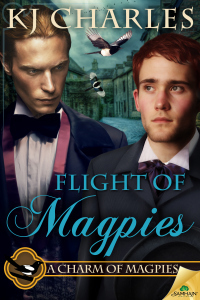 Right, well. Flight of Magpies is out (*cough*yesterday*cough*), the reviews are nice, and you can find the various bits as follows (the giveaway runs till 2 Nov so you may still have time to enter):
Right, well. Flight of Magpies is out (*cough*yesterday*cough*), the reviews are nice, and you can find the various bits as follows (the giveaway runs till 2 Nov so you may still have time to enter):
A blog post about tattooed Victorian aristocracy at Love Bytes
An extract at MM Good Book Reviews
Another extract, this one on the NSFW side of things, at Boys in our Books
A third at The Novel Approach
A deleted scene at Sinfully Sexy
An interview at Josephine Myles
I will also be visiting Becky Black in the near future, in the unlikely event you need to hear me communicate ever again….


October 23, 2014
Review policies, or How To Not Become A Stalking Author
It hasn’t been an impressive time for the author community in the last few days. Kathleen Hale got a full page article in the Guardian (trigger warning for stalking, general warning for repellent disingenuousness and dishonesty) which allowed her to massively extend her stalking campaign against a reviewer. Another author one-upped Hale by travelling the length of Britain to hit a reviewer over the head with a wine bottle, leaving her needing stitches and pressing charges. What next? The British government selling arms to writing groups on the sly?
This behaviour, coming on top of far too many incidents of online and other harassment, has led to a lot of angry pushback, including a number of blogs holding review blackouts to make the point that authors need reviewers. I see reviewers saying things like, “I’m going to stop reviewing, it’s not worth the stress,” or “I’m only going to read books from dead authors because at least they won’t come round my house.” (On the evidence of this week, I wouldn’t be so sure about that. Some people will clearly resent that one star from beyond the grave.)
Of course, most authors aren’t like this. Most of us don’t respond aggressively to reviewers in words, let alone call them at work and turn up at their house and write malevolent articles in national newspapers about them and physically assault them. Most don’t, but because of the way fear and intimidation work, a number of reviewers are scared that the next time they one-star a book, the author will be one of those few who do. So the question going round reviewers is, very simply, how do I tell?
Various solutions have been mooted. The #AuthorYes hashtag has been used to name authors who have a track record of not being aggressively unpleasant at people. Suggestions have been put up of kitemarks or websites to identify ‘safe’ authors, and just as quickly shot down as impractical. Some authors have their review policy (‘I promise not to stalk you!’) stated on their website (as I do), but a lot of people have pointed out that that means nothing. It’s behaving well that counts, not claiming that you don’t behave badly. Words are empty.
And this is true, but I’d like to give a reason why a public review policy works for me.
My page says that I don’t read Goodreads or Amazon reviews and that I will never respond to them, either directly with abuse/stalking/wine bottles over the head (that bit’s implied), or with encouraging my fans to go after reviewers.
You may say: Yeah, whatever, you could be lying. And I could. This is the internet; people lie. I could be poring over every word posted about my books on Goodreads. I could be making obsessive lists of people who say mean things and drawing angry penises on them. I could not be a cat-owning freelance editor at all. Maybe I’m an international hitman who writes gay romance while I’m waiting to shoot controversial politicians, and the cat is a catfish. You’ll never know.
But the point isn’t whether I can make you believe I don’t hale out over reviews. (This is a new verb which I hope to see adopted.) The point is, my posted reviews policy keeps me on track.
I know reading Goodreads /Amazon reviews is a bad idea. I used to read them, and discovered what a bad idea it is first hand. I have done a flowchart on what a bad idea it is. But I’m still tempted because I’m a human. When I go to Amazon and see on the thumbnail that the number of reviews has jumped and the star rating has changed, my finger twitches over the mouse. But I have a posted review policy and if I click, I’m a liar.
And say I am a liar. Say I fall off the wagon and read my Goodreads reviews (declaration: this has happened) and there’s something really stupid and wrong there that any reasonable person would understand I just had to take issue with…
Well, I’m already a liar to myself by reading the review. But if I respond, I brand myself publically as a liar—as someone who has just done something she said she would not do. If I so much as subtweet a grumble about a bad review, someone will recognise it and know I’m a liar. If I link to it on my Facebook page with a hurt comment about ‘why are people so mean?’ in the hope that my fans will give the reviewer a hard time, I will be waving my hypocrisy and dishonesty like a banner. If I leave a snide or angry comment on a review, I will deserve extra condemnation because I said I wouldn’t do that. I’ve given myself a Toxx clause, to make myself stay the hell away.
This is not to say that reading reviews is a bad act. Read them by all means if they don’t act like Dr Jekyll’s potion, turning you into Author Hyde. But obsessing over reviews is where all this appalling absurdity seems to start.
So I have a public stated review policy, not because I expect anyone to take my word for it, but because it raises the stakes for me when I’m tempted to read reviews, let alone respond. It’s the reminder of your weight stuck to the fridge door, the green sash of the Victorian teetotaller, the Note To Self that says: Right now I am thinking clearly how I should behave, and I am taking this opportunity to control the behaviour of my future self, who may be less reasonable.
Obviously I hope that I’d never behave like Hale even if I read every word of every one-star review. Frankly, I’d hope that nobody would. But even normally reasonable people can get obsessed if they feel they’ve been wronged (eg by someone giving their masterpiece a mere three stars on Goodreads), and the internet fosters obsession. We all know how quickly upset can turn to anger and retaliation, how fast responses can escalate, how very easy it is to fall down the rabbit hole.
I’ve nailed my review policy across the mouth of the rabbit hole. To reassure reviewers, sure, but primarily to keep myself out.
________________________________
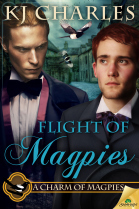 Flight of Magpies is out on 28 October, and the blog reviews (which I am allowed to read, so there) are looking nice.
Flight of Magpies is out on 28 October, and the blog reviews (which I am allowed to read, so there) are looking nice.
Don’t forget to check out Queer Romance Month, and just a reminder of my somewhat fantastic news, if you missed it…


October 20, 2014
Announcement: KJ Charles Regency m/m trilogy to Loveswept
I’m pleased* to say that Loveswept, an imprint of Penguin Random House, will be publishing my Regency gay romance trilogy Society of Gentlemen, starting August 2015.
*pleased, n., Brit. Leaping up and down, squealing with joy, and running in circles making noises only audible to dogs
This is Loveswept’s first queer romance. I am absolutely delighted to be doing this with them. Here’s what Society of Gentlemen is about:
Society of Gentlemen is set at a time of incredible privilege for the few and social turmoil for the many. Regency England is torn by war, poverty and social unrest, ruled by a draconian government. People are starving, rioting, rebelling. But the aristocrats dance on, in their glittering existence of balls, gambling, silks and scandal…
The trilogy covers three couples between autumn 1819 and spring 1820. A young Radical discovers his noble birth and is catapulted into a world of privilege, fashion and murder with a dandy as his guide. A government official and a revolutionary seditionist find common ground in their unconventional desires, under the threat of the gallows. And a lord in love with his valet struggles to find a way across the social abyss that divides them.
I am running out of adjectives for how thrilled I am about this. Obviously because me! Trilogy! Loveswept! Penguin Random House! ME!!! But there’s another reason which is a great deal more serious and less about my kudzu-like ego.
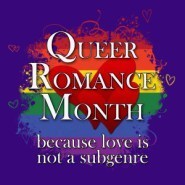 Back in August, I was involved in the conversations that led to Queer Romance Month. One of the reasons a group of authors put QRM together was our frustration with the idea that queer romance is a subgenre of romance, like erotic or historical — something distinct from, you know, basic default romance. Sure, queer romance is a specific thing that people look for, for good reasons, and marketing requires all books to be tagged in such a way that people can find them. But queer protagonists are as valid as any other, those love stories are as important as any other, and those books might need to be tagged but they sure as hell don’t need to be segregated, to be published and reviewed and treated as something inherently different.
Back in August, I was involved in the conversations that led to Queer Romance Month. One of the reasons a group of authors put QRM together was our frustration with the idea that queer romance is a subgenre of romance, like erotic or historical — something distinct from, you know, basic default romance. Sure, queer romance is a specific thing that people look for, for good reasons, and marketing requires all books to be tagged in such a way that people can find them. But queer protagonists are as valid as any other, those love stories are as important as any other, and those books might need to be tagged but they sure as hell don’t need to be segregated, to be published and reviewed and treated as something inherently different.
That was what I wrote about in the first post to go up on the QRM site, ‘Love is Not a Subgenre’.
Women are not a subgenre of men, and queer is not a subgenre of straight, and multicultural romance is not a subgenre of romance about white people. … It shouldn’t be ‘making it a factor’ to have other characters taking centre stage. It should just be a reflection of our world, where actually lots of people are gay or female or Asian or trans or mixed race or bi or asexual or or or.
I believe passionately that the big romance publishers should be publishing all kinds of romance, queer and het, with protagonists of whatever age or race or colour or creed or gender identity. Tag them for search, yes, just as you’d tag any book. But publish it all together.
I’m delighted my trilogy will be Loveswept’s first gay romance, to join the other books putting queer romance in the mainstream. I hope there will be many more, with gay and lesbian and trans and bi and many other protagonists telling their stories alongside their het counterparts until it becomes, as it should be, an unremarkable thing.
One swallow doesn’t make a summer and all that. But I find it intensely pleasing that I wrote ‘Love is not a Subgenre’ out of frustration on this very topic when we began setting up Queer Romance Month in August, yet that I can announce this trilogy while QRM is still running in October. And I’d like to see this deal as a sign of better things on the way in the genre, a broader and more inclusive reach. Because as I said in my QRM post, it’s pretty simple really. Queer romance is romance, people are people, love is love, and we can all use another good book.
____________________________________________________________________________
A Fashionable Indulgence (Society of Gentlemen 1) will be out from Loveswept in August 2015.
For a taster of the Society of Gentlemen world, my short story ‘The Ruin of Gabriel Ashleigh’ features two characters who will appear in the trilogy. It’s in the anthology Another Place in Time, available on Amazon.com, Amazon.co.uk and ARe, along with five fabulous m/m historical romances by five of my favourite writers, and is a Dear Author Recommended Read. All proceeds from its sale go to support AllOut.org., so go buy it, okay?
Read more on ‘The Ruin of Gabriel Ashleigh’ and my inspiration for Society of Gentlemen here.
Flight of Magpies
, the third in my Charm of Magpies trilogy, is out on 28 October, and the blog tour with giveaway starts at Love Bytes 22 October. God forfend I should shut up about me any time soon.
If you’re new to queer romance, hit me up here or on Twitter @kj_charles for recs, or visit Queer Romance Month for fascinating posts, flash fiction, giveaways and tons of good book advice.


October 9, 2014
Living in a Box: gender and genre
A lot of people are angry about the gendering of children’s books. Well, just look.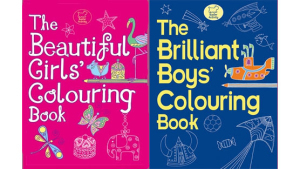
Boys are brilliant, girls are beautiful. Boys have adventures, girls are surrounded with pretty ornaments. Check out @lettoysbetoys if you want to go into the whole sordid mass of pink and blue that is gendered children’s publishing.
Just to head off two things at the pass:
1) It is perfectly possibly to publish for kids who like pretty frilly things (or things that go, or dinosaurs, or adventure) without slapping a gender exclusion on it. Usborne and Parragon have both stopped publishing specifically ‘Girls Activity/Sticker/Doodle’ books without noticeably reducing their output. @LetToysBeToys tweeted this interesting image just today from one of the most obnoxious purveyors of gendering. See? Not that hard, is it?
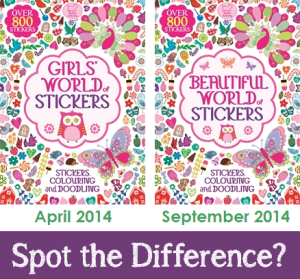
2) Girls’ and boys’ brains are not ‘hard wired’ to like particular colours. Any preference is entirely cultural. A Ladies’ Home Journal article from June 1918 decrees, “The generally accepted rule is pink for the boys, and blue for the girls. The reason is that pink, being a more decided and stronger color, is more suitable for the boy, while blue, which is more delicate and dainty, is prettier for the girl.” Meanwhile pink in Japan isn’t historically associated with femininity, but with sex. A ‘pink salon’ is a brothel that specialises in oral. Just saying.
Back to the point. I have two kids, a boy and a girl. My son is a scabby-kneed thug with a head full of football who draws dinosaurs and spaceships. He also draws flowers. Aged 3 he had a pair of trousers with big yellow sunflowers on that he wore till they fell apart. He used to wear his big sister’s dresses all the time to nursery, and when I painted her toenails, I painted his too.
Here are some things that adults have said. Adults dropping off their own kids at nursery; adults at family barbecues with kids and grandkids running around.
Why are you wearing a dress? You look like a girl.
Aren’t those girls’ trousers?
You don’t want to let him wear make up… [with knowing look, like he’s about to catch The Gay from exposure to nail polish]
They don’t say these things so much any more, of course, because he doesn’t do it any more. He’s five now and he’s learning. They taught him. They taught him when he was three years old, crying on my lap because his three-year-old friends had mocked him for wearing a dress. (Hmm, I wonder where they learned to do that.) They taught him that the doodle book he’s been happily using for the last 12 months must be rejected because now he can read ‘For Girls’ on the front.
Don’t start me on what they are teaching my daughter. Don’t even start.
‘Bastards,’ you cry. ‘Who are the jerks pushing this crap on our kids? Who are they?’
Well, they are us. They are children’s publishers, an industry dominated by intelligent, thoughtful, politically aware, socially liberal women, who publish ‘Brilliant Pirate Book for Boys’ and ‘Pretty Princess Book for Girls’ because it sells, and because if Usborne and Parragon aren’t doing it, then the other players can swoop in and clean up on their market share. And they are the people who make up that market share, because that’s what ‘it sells’ means: people buy it. You buy it. I buy it. Because it’s easy to snatch a colour-coded sticker book off a crowded shelf. Because it takes work to know a child. Because one book can’t hurt. Because girls like pink and boys like blue.
So we tell kids what the norms are, what shape box they should fit in, and because kids are the most conformist creatures outside ants, they do their obedient best to fit. But kids grow. And if your box doesn’t fit when you’re three, it sure as hell won’t fit at twenty-three.
I’ve been privileged to be part of Queer Romance Month, running through October, several posts a day, with authors and allies talking about all aspects of queer romance. The theme we set for the event is, ‘Love is Love’. But alongside that, a second theme that’s coming out incredibly strongly from writers and readers is, ‘I need to see myself in books. I need to know that I’m not alone.’
I would have given my right arm for some believable, realistic queer characters when I was a teenager. Maybe then I would have seen myself and learned that there’s nothing wrong with me. (LA Witt)
For the first time, I’d read a story with two main protagonists with whom I could relate. I desperately wanted them to be happy. I recognised their fears, hopes, and dreams, because they weren’t dissimilar to my own. I felt represented in the pages. It finally all made sense. (Amy Dunne)
When I look at gendered kids books, I see part of a machine that tells children what they ought to be and want, churning out the boxes for kids to go in. When I look at QRM, I see adults crying out because their boxes didn’t fit them, and they hurt.
As a man with a degree in youth ministry, when I finally came out between the ages of 24-26, I was pretty much a junior high school girl in the body of an adult male, and I behaved as such. I think many of us who were closeted for so long faced this challenge. I’d never been kissed, never been on a real date (not with guy or girl). I ended up, for the next several years, on a relationship crash course of growing up. Those people who never lived in the closet don’t understand why a 25 year old gay guy might makes stupid choices that the rest of world figured out when they were fourteen.
Because we were never fourteen, not like everyone else. (Brandon Witt)
Let every child be a pirate or a fairy. Let boys have pretty prince books if they want them, and girls have adventures if they like. Let princess sticker books have stickers of dragons and swords as well as bangles and cupcakes. Let boys wear dresses and girls wear shoes that are designed to be hard-wearing instead of sparkly. Let kids grow into adults who can accept their own feelings, the way they look, the way they are, without measuring them against the social norm and finding themselves wanting. Stop telling people to be pink or blue, when we all know there’s a rainbow.
 ‘But the market wants gendered books,’ producers cry. ‘There’s a demand. People want boys’ shoes to be tough and girls’ shoes to be pretty.’ Yes, they do, and they tell three-year-old boys off for having painted toenails, and all the rest, because adults live in boxes too, hemmed in and misshapen by habit and unexamined assumption and laziness.
‘But the market wants gendered books,’ producers cry. ‘There’s a demand. People want boys’ shoes to be tough and girls’ shoes to be pretty.’ Yes, they do, and they tell three-year-old boys off for having painted toenails, and all the rest, because adults live in boxes too, hemmed in and misshapen by habit and unexamined assumption and laziness.
Change is rarely painless. I know it’s very difficult to be the publisher who says, ‘Let’s not gender books’ when Sales are showing you that they outsell the rest, or who says ‘Let’s publish queer romance alongside het’ when you’ve never touched that market before.
But it’s a lot more difficult to be the little boy who just wanted to wear a dress to nursery.
_______________________________________
Support Let Toys Be Toys and the associated Let Books Be Books campaign here and sign the petition against gendered books.
The #WeNeedDiverseBooks campaign supports wide representation of race, gender, LGBT people, people of color, people with disabilities and ethnic, cultural, and religious minorities in children’s/YA literature. Find out more here or via the hashtag on Twitter.
And don’t miss the moving and thought-provoking posts coming every day in October from Queer Romance Month.


September 29, 2014
News, new release and Queer Romance Month
It’s all about the exciting news this week.
First we have the release of gay historical romance anthology Another Place in Time. This is a collection of six stories put together by the lovely Susan Lee, ranging from Knights Templar to 1940s America, written by a selection of some of my favourite historical authors and also me. It’s being published to coincide with the US LGBT History Month, and all monies raised go to All Out. What I’m getting at is, go spend some money. The first reviews are in and stellar.
a consistently high quality anthology, not one of the short stories was less than a 5 star rating for me and I can honestly say I absolutely loved every single one of them (Sinfully Sexy)
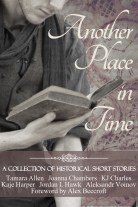 My story, ‘The Ruin of Gabriel Ashleigh’, is my first foray into Regency. I’ve always loved Georgette Heyer’s Regency romances and had immense fun writing one of my own, with a hungover black sheep, a dangerous gambler, and a game of cards for very high and just slightly kinky stakes. I had to learn how to play ecarté for this story, dammit: the least you could do is read it. (This one is very high on the sexytimes, incidentally. Because I felt like it, that’s why.)
My story, ‘The Ruin of Gabriel Ashleigh’, is my first foray into Regency. I’ve always loved Georgette Heyer’s Regency romances and had immense fun writing one of my own, with a hungover black sheep, a dangerous gambler, and a game of cards for very high and just slightly kinky stakes. I had to learn how to play ecarté for this story, dammit: the least you could do is read it. (This one is very high on the sexytimes, incidentally. Because I felt like it, that’s why.)
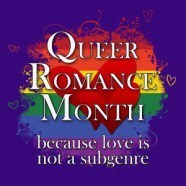 Second: October is Queer Romance Month! A group of authors decided to put queer romance front and centre, and this is the result: a full month of posts, flash fiction, recommendations, giveaways and chat about all aspects of queer romance, by a bewildering variety of authors. I’ve been uploading posts all morning, which took ages because they’re too interesting not to read. Check out my introductory post on Love is Not a Subgenre here, and return daily through October for all the goodies. (And follow us on @queerromance too!)
Second: October is Queer Romance Month! A group of authors decided to put queer romance front and centre, and this is the result: a full month of posts, flash fiction, recommendations, giveaways and chat about all aspects of queer romance, by a bewildering variety of authors. I’ve been uploading posts all morning, which took ages because they’re too interesting not to read. Check out my introductory post on Love is Not a Subgenre here, and return daily through October for all the goodies. (And follow us on @queerromance too!)
Thirdly, of less import to anyone but me: I’ve made the leap. As of last week I’m now a full time writer and freelance editor. So, uh, more books from me (hopefully), and I’m at kjcharleswriter[at]gmail.com for anyone looking for development/line editing who hasn’t been scared off by this blog. Get in touch!
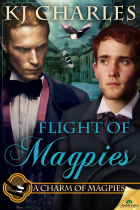 And finally, book 3 of A Charm of Magpies, Flight of Magpies, will be out at the end of the month. Stay tuned for a giveaway mid-Oct.
And finally, book 3 of A Charm of Magpies, Flight of Magpies, will be out at the end of the month. Stay tuned for a giveaway mid-Oct.
That’s it for news, unless you want to hear how my cat’s doing. (Eating craneflies. Bet you’re sorry you asked.)
Keep up on Twitter or join my Facebook group for extra book info and sneak peeks.


September 12, 2014
Ten Ways for Authors to Fail on Social Media
There’s been a lot of social-media career immolation going on this week. It may be the full moon. People making idiots of themselves is not a particularly edifying sight, so I’m not linking specific cases, but here are my basic principles of How Not To Do It for authors.
1) Interact online if you’re no fun to interact with.
Everyone tells you to be out there. Have a Goodreads or Facebook group, chat on Twitter, have a community, let them get to know you. But what if they don’t like you? I’ve had the experience of disliking an author’s online personality so much that it’s seeped into how I regard their books. I’ve chosen not to pick up books that would have otherwise been autobuys.
Obviously, authors have been unlikeable throughout history. This is why we have to sit alone in small rooms with our imaginary friends. But in previous years, it was reserved for their long-suffering loved ones and their editor. Now fans can get a share too.
This is a tricky one to judge, since most people don’t set out to be jerks. And I’m certainly not suggesting anyone should be silent, or a doormat. There are things we all need to stand up for, and stuff that shouldn’t be let go. Some people make their, uh, bracing interactive style a positive part of their brand (i.e. forceful without being a jerk). But if you’re getting into thin-skinned sulks, insulting your own fans, or picking fights with potential readers, you’re probably better off backing off.
2) Be vile.
Right. If you, the author, post a hilarious video/meme or an amusing blog post or whatever, and the response is, ‘wow, that is really racist/sexist/homophobic/transphobic’, the correct approach is as follows:
Look again at what you posted.
Consider why the objection has been raised and if it is valid. If you can’t see what the problem is, ask, and listen to the answer with an open mind. You might learn something.
If you have caused real offence, even if you had no intention of doing so, apologise, and try to learn from the experience. If you think saying it was worth the offence caused, or that you’ve been misinterpreted, try explaining why and listening to the responses. Again, you may learn something.
If you stick your fingers in your ears, make disingenuous excuses, dismiss the complaint without considering it, mock the complainant or encourage your fans/followers/family to attack them, be aware that you might as well put ‘YES I AM A RACIST’ or whatever at the top of your website, because that’s what’s going to spread about you, and it will spread like herpes and be as hard to get rid of. It might even be accurate.
We are all crass or clumsy sometimes, and nobody likes to be called out. But empathy is a basic writer skill. Don’t reserve it for your own hurt feelings; summon it up for the people who were insulted or distressed by what you said and brought it to your attention in the hope that you’d listen to them. Or, as Chuck Wendig so wisely puts it, Don’t be a dick.
Obviously, not all offence is equal. You can offend a lot of men simply by being female on the internet, for example. And any kind of political discussion may upset someone: that’s politics. But I’m not talking about arguing gun control. I’m talking about things that mock, belittle or insult minority or vulnerable groups – the rape joke, the thoughtless use of ‘retard’ or ‘gay’ as a synonym for ‘stupid’ or ‘rubbish’, the cartoons and videos and memes that casually, lightly, cruelly sneer at women, or racial groups, or whatever aspect of people’s identities.
Because if an author lacks the empathetic skills to understand why, say, ‘retard’ is a horrible word to use for ‘stupid’, and the linguistic ability to find an alternative, or the heart to care why they should – well, it doesn’t say much for them as a human being, but it’s a crashing indictment of them as a writer.
3) Bore.
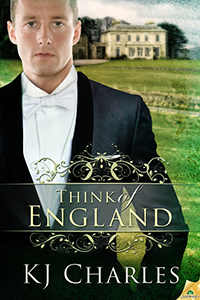
LOOK A BOOK I WROTE A BOOK BUY IT BUY IT BUY IT NOOOOOOOW
Take Twitter. Most people don’t follow 5,000 accounts on Twitter, and if they do, they’re probably not that interested in you anyway. Most people follow a few hundred accounts, so their Twitter streams are not fast-flowing torrents. Therefore if you do automated tweets, multiple daily book plugs, retweeting FFs, repeating your jokes in case someone missed them etc, you might once hit the attention of the person who follows 5,000, but you will definitely annoy the crap out of the far more valuable person who follows just 200, of whom one is you.
Apply this principle to your preferred social media outlet and its own ways to be annoying (flooding Facebook with book spam, or…whatever it is people do on Tumblr, I don’t know, it scares me). The point is, don’t go after new fans without considering people who are already interested enough to follow you. That’s how mortgage companies behave, and nobody likes them.
4) Forget who you’re talking to.
I think of this as three circles of people.
Fans. Fans like extracts, early looks at covers and blurbs, writing updates and hearing about your massive yet fragile ego work. Love and cherish fans, because they deserve it. Consider setting up a group/place where you can interact with them directly, share goodies and give them things they’ll value, in a way that doesn’t overwhelm your general social media presence.
The wider potential readership. People who might be interested in reading your books, but don’t care about cover reveals, new blurbs and so on. Or people who don’t read your books and probably never will but who like your social media and will share posts, retweet, etc. Swamping these people with marketing will not convert them into fans. If you blog/tweet/pin/exist in an interesting or amusing way, that may convert into sales, directly because you’re interesting, or via retweets and links and signal boosts that make other people aware of you. Or it may not, of course, but promising a cover reveal later this week!!! four times a day definitely won’t. ‘Too much promo’ is a really common reader complaint, and there’s just no need for it, when the internet offers all kinds of ways to talk to different groups of people with the stuff they want to hear.
People who will never read your books or share your content. Not everyone is a potential reader, tragic though that may seem, and promo-ing to these people is a waste of time. Focus on the people you want to talk to and don’t fret about meaningless numbers. I pick up rugby accounts whenever I tweet about my team; they slough off like sunburnt skin when I get back to queer romance; I’d be an idiot to focus on retaining rugby followers at the expense of, you know, readers.
5) Argue with reviews. Complain about reviews. Start fights about reviews. Bribe people to pull reviews.
(I added that last bit to the header because I have just read an author’s blog in which she makes it clear she’ll refund the cost of the book to dissatisfied readers as long as they don’t leave bad reviews. I, uh. No. No, no, no.)
Reviews: Just leave it. I don’t care if the review is the most baseless, nastiest thing you’ve ever seen. I don’t care if it gives one star based on the blurb, your hairstyle, or the fact that they misread The Magpie Lord as The Moggie Lord and were disappointed because it wasn’t about cats. JUST LEAVE IT. You know that famous incident, where an author argued with a bad review and everyone on the internet sided with the author and then the reviewer changed her mind and rated it five stars? No, you don’t, because it never happened. Grit your teeth and walk away. (Or use my handy flowchart!)
Passionate, committed, interactive readers are as important to authors as keyboards and caffeine. That doesn’t change just because one of them is passionately and interactively committed to hating your book.
6) Do lists of ten things if you only have five things to say.
Um.
________________________________
KJ Charles is the world’s least convincing social media guru and you probably shouldn’t listen to her. She is on
Twitter
, answers book questions on
Goodreads
, and has a Facebook
presence
for chat,
author page
for book news and
group
for fans/people who want goodies–join up! There’s also
books
, which you can buy, and
free stories
, which you don’t have to.




